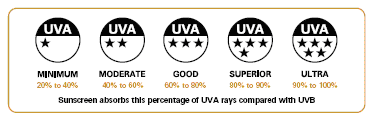Sun Protect Tips With Solar Buddies
We recently caught up with the team at Solar Buddies, the brand transforming sun safety for families by making sunscreen application easier, cleaner, and more fun. As sunny days approach, it’s the perfect time to brush up on sunscreen essentials, from mineral vs. chemical formulas to choosing the right SPF.
Here’s Solar Buddies handy guide to keeping your family safe in the sun!
Mineral vs Chemical Sunscreens: What’s the Difference?
Mineral Sunscreens
Mineral sunscreens (also called physical sunscreens) use zinc oxide or titanium dioxide to sit on top of the skin and physically block UV rays.
✅ Pros:
Provide immediate protection after application
Offer broad-spectrum UVA & UVB coverage
Gentle on sensitive skin
Safer for coral reefs and marine life
❌ Cons:
Can leave a white or chalky residue
Thicker texture, sometimes harder to apply
Need more frequent reapplication, especially after swimming
Based on recommendations from the Yuka app, here are top-rated mineral sunscreens:
Badger Baby Sunscreen Clear Zinc SPF30 → Baby-safe, organic ingredients
Green People Children Scent Free Sun Cream SPF30 → Great for sensitive skin
Shade All-Natural Sunscreen SPF25 → Moisturising, all-natural
Babo Botanicals Clear Zinc SPF30 → Hypoallergenic, reef-safe
Thinkbaby Safe Sunscreen SPF50+ → Broad-spectrum, water-resistant, and non-nano zinc
Choosing between mineral and chemical sunscreens depends on your personal preferences, skin type, and environmental considerations.
Chemical Sunscreens
Chemical sunscreens use ingredients like oxybenzone, avobenzone, or octocrylene to absorb UV rays and convert them into heat.
✅ Pros:
Lightweight, easy to apply, and invisible on skin
Quick absorption
Many water-resistant options
❌ Cons:
Can irritate sensitive skin or trigger allergies
Some ingredients may harm marine life
Need to be applied 15–20 minutes before sun exposure
Based on recommendations from the Yuka app, here are top-rated mineral sunscreens:
Caudalie Vinosun Ocean Protect SPF50+ → Lightweight, invisible finish
Mustela Very High Protection Sun Lotion SPF50+ → Kid- and baby-friendly
Eucerin Sensitive Protect Face Sun Cream SPF50+ → Soothes sensitive skin
La Roche-Posay Anthelios Hydrating Body Lotion SPF50+ → Great for face & body
Avene SPF50+ Invisible Finish Cream → Ultra-broad spectrum with a non-shiny finish
thelittlelop team’s favourite 💚
We’re big fans of Altruist here at thelittleloop. It’s affordable, fragrance-free, and does exactly what it says on the (very understated) tube. Charlotte’s consultant dermatologist recommended it, and we’ve never looked back. Bonus points? Every purchase supports children with albinism in Africa. No flashy branding, just brilliant sun protection that does good. Go check them out!
Why SPF & UVA Protection Matter
Both UVA and UVB rays can cause skin damage, UVB causes sunburn, and UVA leads to wrinkles and age spots. Both can increase skin cancer risk.
SPF 15, or Sun Protection Factor 15, stands for the level of protection a sunscreen provides against UVB rays.
SPF 15 means that you can be exposed to the sun 15 times longer before your skin begins to burn compared to if you were not wearing any sunscreen.
Example: If it takes your skin 10 minutes to burn without sunscreen, with SPF 15, it would take approximately 2.5 hours (15 x 10 minutes) before you start to burn. SPF 50 would theoretically offer protection for 500 minutes (10 x 50).
Here’s how SPF measures up:
SPF 15 → blocks ~93% of UVB
SPF 30 → blocks ~96.7%
SPF 50 → blocks ~98.3%
Look for broad-spectrum SPF30 or plus with 5-star UVA protection to keep your family’s skin safe.
How Much Sunscreen Is Enough?
A general rule: use a shot glass (about 1 ounce) of sunscreen to cover the body of an average adult. For kids, adjust accordingly, but don’t skimp! Don’t forget easy-to-miss spots like:
Ears
Back of the neck
Tops of feet
Scalp
Tip: Use your Solar Buddie applicator to ensure even, mess-free coverage that kids can apply themselves with your supervision.
As a thelittleloop member, enjoy an exclusive 15% off your next order at Solar Buddies!
Using Insect Repellent & Sunscreen?
While combo sunscreen-insect repellents sound convenient, it’s better to use them separately. Sunscreens can lose effectiveness when combined with DEET, and applying them together may increase DEET absorption and toxicity, especially in kids.
For best protection, apply sunscreen first, then insect repellent, following each product’s instructions.
Article from the www.skincancer.org
Check the Expiry Date!
Check the PAO symbol (Period After Opening) on the bottle, usually 12-24 months.
Tip: Write the opening date on the bottle so you don’t waste usable sunscreen!
Final Tips for Safe Fun in the Sun
Choose a sunscreen that fits your family’s skin needs and lifestyle
Apply generously and reapply every 2 hours, especially after swimming or sweating
👇 Download Solar Boddies’s top sun safety poster below 👇






